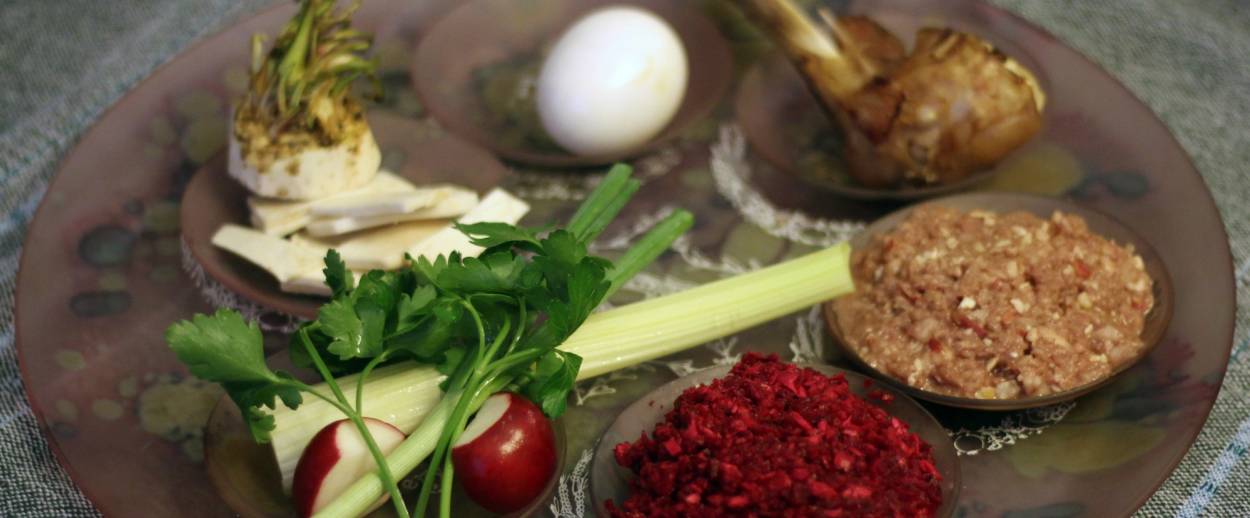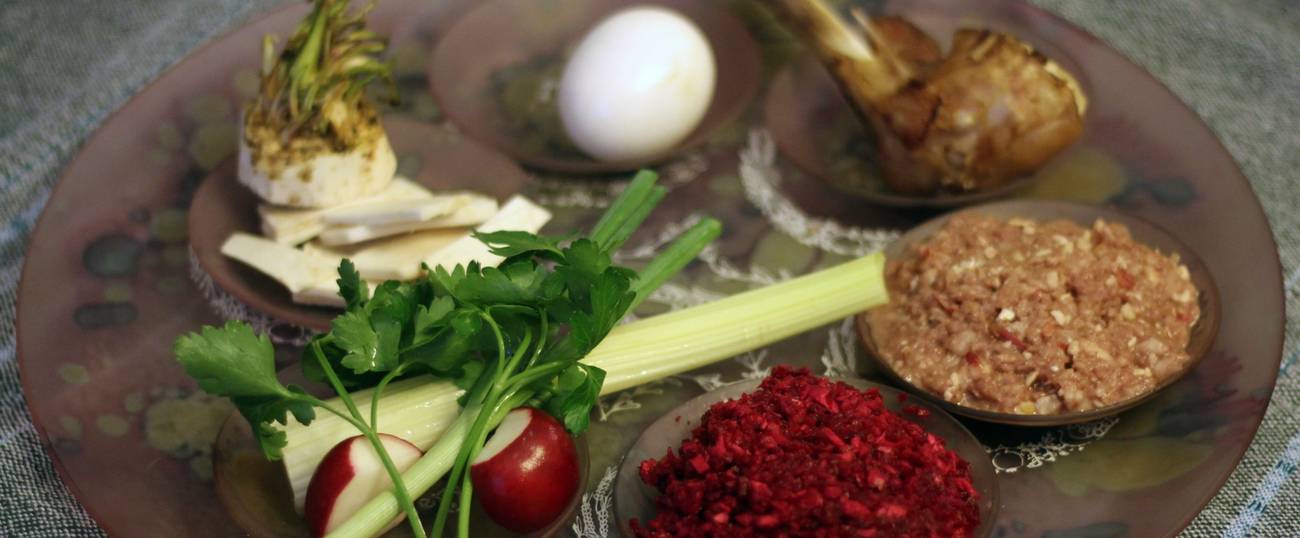New York Jews Will Spend Over $27 Million to Fill Their Seder Plates
That’s a whole lotta karpas




There are a lot of Jews—about 1.6 million, spread out over about 700,000 households, according to a recent study—living in the Greater New York area, the largest Jewish population in the United States. Which got me thinking about how much money New York Jews will spend to properly fill their Seder plates. So let’s have some fun.
This Passover, which begins at sundown on Friday, let’s assume every household in the Greater New York City area—by some galactic bubbe-stroke of spiritual camaraderie—observes the High Holiday. That’s 700,000 Seder plates that need filling. That’s a lot of eggs and bitter herbs and charoset and karpas and shank bones (which, in its singular form, would make for a decent high school band name).
Altogther, how much would it cost were every Jewish New York household to have a traditional Seder plate? Here’s a completely unscientific investigation. And let’s not scrimp here. This is our Exodus, remember. Let’s do it right.
Egg
— Ingredient: 1 hard-boiled organic egg from a hen raised on a groovy 90-acre farm in upstate New York
— Cost: ~$ 0.70 (price does not include the costs of running your stove; or dropping eggs)
Shank bone
Unless you have the space to raise and then sacrifice lambs or chickens on your own, let’s stick with buying meat from a kosher butcher, and making the bone at home. That being said, stripping the meat off of a lamb’s neck and then roasting is sounds a lot worse than doing the same to a chicken’s neck—both would be considered “shank bones”—so let’s go with that animal bone.
— Ingredient: 1 lb. of kosher free-range USDA certified organic chicken necks
— Cost: ~$5.00
Bitter herbs
Sure, you could nab some jarred store-bought horseradish, which will then sit in your fridge for a year. But why not make your own couture horseradish by following the carrot circus horseradish recipe from the Gefilteria?
— Ingredient: Organic carrots
— Cost: ~$1.50 (based on Park Slope Food Coop prices, duh)
— Ingredient: Organic horseradish root
— Cost: $4.98 (from eBay, of course, because where else do you buy this kinda stuff?)
— Ingredient: Sugar
— Cost: Free, save for a conversation. Ask your neighbors. Maybe they’ll tell you a story about what it was like back in the day while you’re there, which is a win-win for everybody.
— Ingredient: Kosher for Passover white vinegar (which, it appears, is quite a complicated product)
— Cost: A couple bucks
— Ingredient: Water
— Cost: Free (think about this one long and hard for a minute)
— Ingredient: Organic, not-from-concentrate lemon juice
— Cost: $3.78
— Ingredient: Salt
— Cost: Free, like crying
Charoset (recipe)
— Ingredient: Trader Joe’s Walnut Halves and Pieces
— Cost: $7.49
— Ingredient: 1 organic Fuji apple
— Cost: ~$1.25
— Ingredient: Manischewitz Extra Heavy Malaga wine (1.5 L, because, well, why not)
— Cost: ~$10.00
— Ingredient: Cinnamon and brown sugar
— Cost: None (C’mon now, that’s already in your pantry)
— Ingredient: Elbow grease, tender loving, care
— Cost: Free?
Karpas
— Ingredient: Organic parsley sprig (saying “sprig” is much sweeter than eating it)
— Cost: ~$1.00
Orange (because, you know, inclusion and progress and modernity)
— Ingredient: organic Valencia orange (with a few seeds)
— Cost: ~$1.50
And the Seder plate? Dust off that squiggly clay one you made in Hebrew school when you were eight. That’s free, except for the memories it might bring back, for which your on your own.
Total cost to fill one Seder plate: $39.20
And so, if all 700,000 Jewish households in Greater New York City observed Passover and created their Seder plates as outlined above, these families with altogether spend $27,440,000 (!) on Seder plates alone. That’s a lot. And I’m clearly in the wrong business.
Now let’s eat!
Jonathan Zalman is a writer and teacher based in Brooklyn.